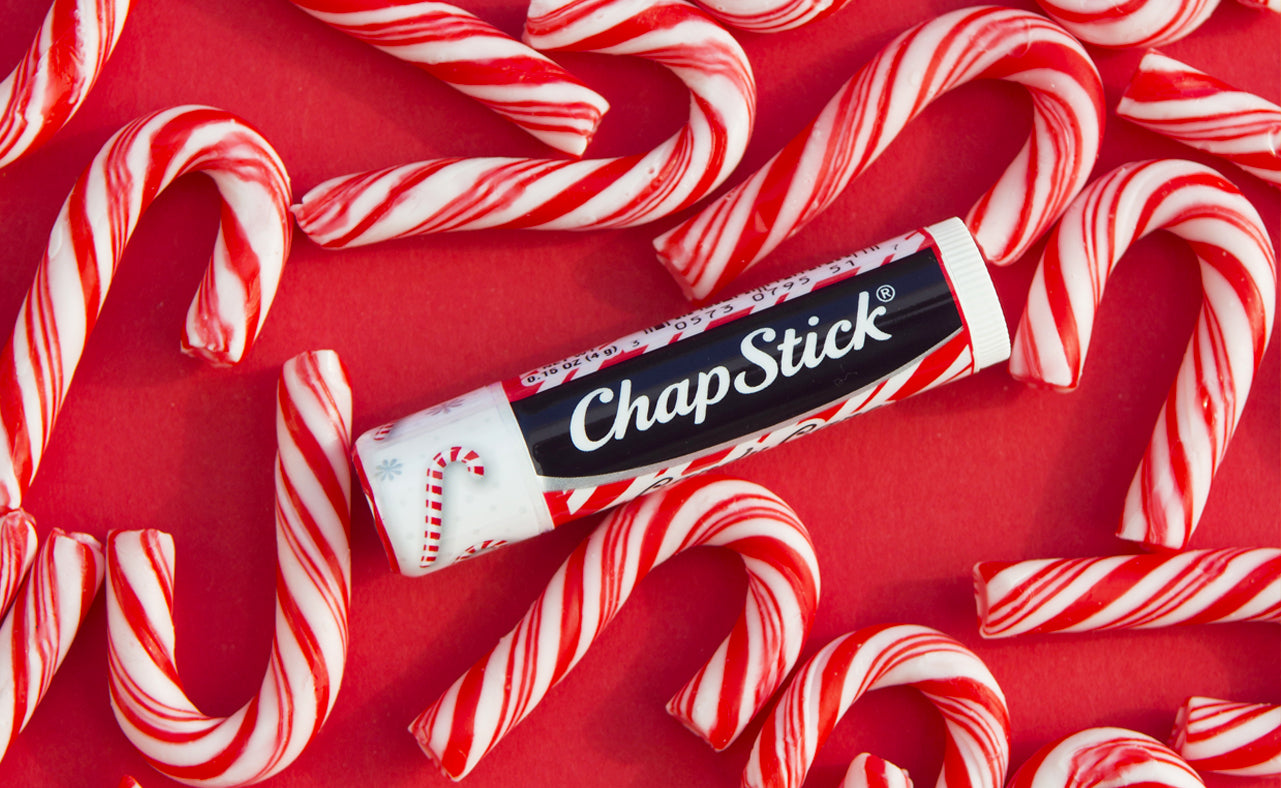
We all have our own special holiday traditions and preferences when it comes to seasonal candy. But we have to admit, nothing says 'holiday cheer' quite like the legendary red-and-white stripes of a candy cane.
Candy cane flavor is one we've come to take for granted during the holiday season, but have you ever wondered about the history of this iconic candy? We've done a little sleuthing to bring you the story behind your favorite holiday ChapStick'® flavor'keep reading to find out more about the legend of the candy cane!
History of the Candy Cane
The legend of the candy cane varies depending on who you talk to, but most can agree that the first candy can was produced back in 1670 in Cologne, Germany. The story goes that the choirmaster at the Cologne Cathedral was irritated by the ruckus that children were causing in the church during the live Christmas nativity scene. To keep the children quiet, the choirmaster distributed sugar sticks bent into the shape of a shepherd's crook to eat during the services. These candy sticks became a Christian tradition associated with Christmastime and spread from Cologne to other areas in Europe.
The first candy canes were made by hand, like most stick candy produced before the 20th century. In the 1920s, the Bunte Brothers confectioners of Chicago filed one of the first patents for machines that would manufacture candy canes. Across the country, in Albany, Georgia, Robert McCormack of the Famous Candy Company got his start making candy canes in 1919 and grew into one of the top manufacturers of candy canes worldwide by the middle of the century.
Some say that the red-and-white colors of the candy cane have religious Christian origins'the white candy is said to represent the purity of Christ and the red stripes are said to signify the blood of Christ. The candy cane's peppermint flavor is said to come from an herb named hyssop, which was used in the Old Testament to represent the purity of Jesus. Despite their supposed Christian origins, there's no religious affiliation required for enjoying candy canes'everyone can appreciate their festive colors and peppermint flavor!
Crazy Candy Cane Flavors
Since candy canes have been around for over 350 years, candy makers have had a lot of time to innovate and experiment. Peppermint is the classic candy cane flavor, but candy makers around the globe have put some interesting spins on tradition over the years. Some of the craziest candy cane flavors we found include:
- Pickle
- Cookies and cream
- Bacon
- Swedish Fish
- Blueberry
- Clam
- Coal (actually cinnamon-flavored)
- Wasabi
- Gravy
- Mac and cheese
- Sriracha hot sauce
- Coffee
- Root beer
- Huckleberry
- Bubblegum
- Sugar plum
- Rotisserie chicken
- Sour Patch Kids
- Ham
- Kale
- Pizza
Chances are, if you can imagine it, somebody's tried it!
Our Favorite Candy Cane Holiday Traditions
The most obvious thing to do with a candy cane is to eat it plain. However, there are plenty of other fun holiday traditions that incorporate this iconic seasonal candy. Making chocolate peppermint bark decorated with crushed candy canes is one option, as is using crushed candy canes to top homemade holiday truffles. You can also use them to garnish a mug of peppermint hot chocolate, add them to your favorite holiday cocktail, or even grind them down into a festive candy cane sugar body scrub! If you celebrate the holidays with a tree, candy canes make for simple and festive ornaments that are easy to hang up, and if you celebrate with stockings, they're also great stocking stuffers.

